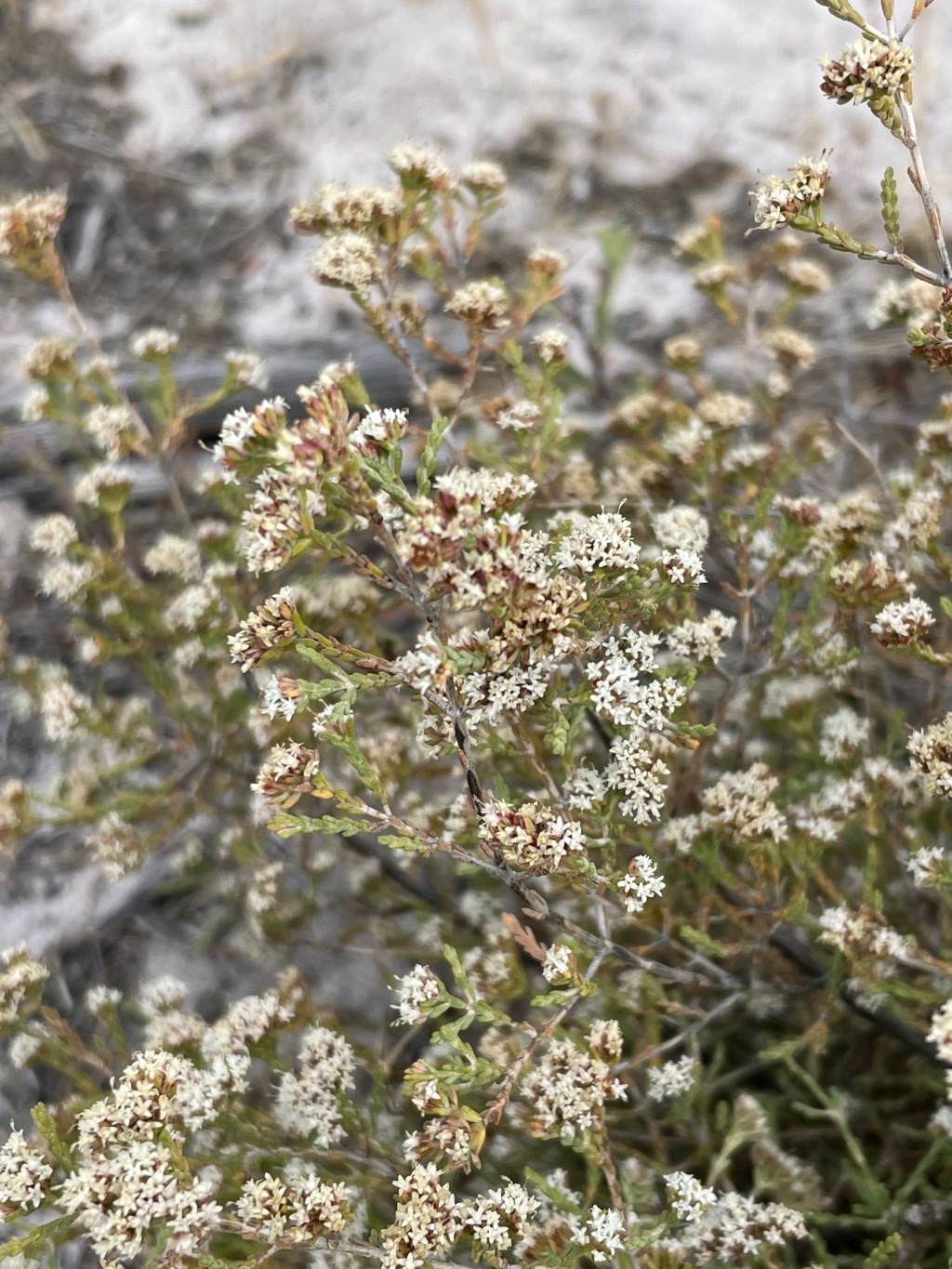Darwinia
Prostrate to medium-size shrubs, mostly glabrous. Leaves small, terete, linear, ovate or falcate, opposite, sometimes whorled, spreading; margins entire, fimbriate or denticulate. Inflorescence axillary, either an aggregation of single flowers or a corymbose head, each flower enclosed by a pair of caducous bracteoles. Flowers bisexual; hypanthium papillose, hollow, cup-shaped to shortly cylindric, 5-ribbed or rugose at base, extending above the ovary; sepals 5, usually small, petaloid; petals 5, white, as long as or longer than sepals, enclosing lower part of style; stamens 10, in a ring alternating with 10 minute staminodes, anthers globular, opening by terminal pores; ovary inferior, 1-celled, enclosed by lower part of hypanthium, ovules 2–4; style projecting from flower, hairy below stigma. Fruit small, indehiscent, enclosed in hypanthium and crowned by persistent sepals and petals; seed usually solitary, soft.
51 species, in all mainland States except Northern Territory, but mostly southwest Western Australia.
Jeanes, J.A. (1996). Myrtaceae. In: Walsh, N.G.; Entwisle, T.J., Flora of Victoria Vol. 3, Dicotyledons Winteraceae to Myrtaceae, pp. 942–1044. Inkata Press, Melbourne.
 Spinning
Spinning

